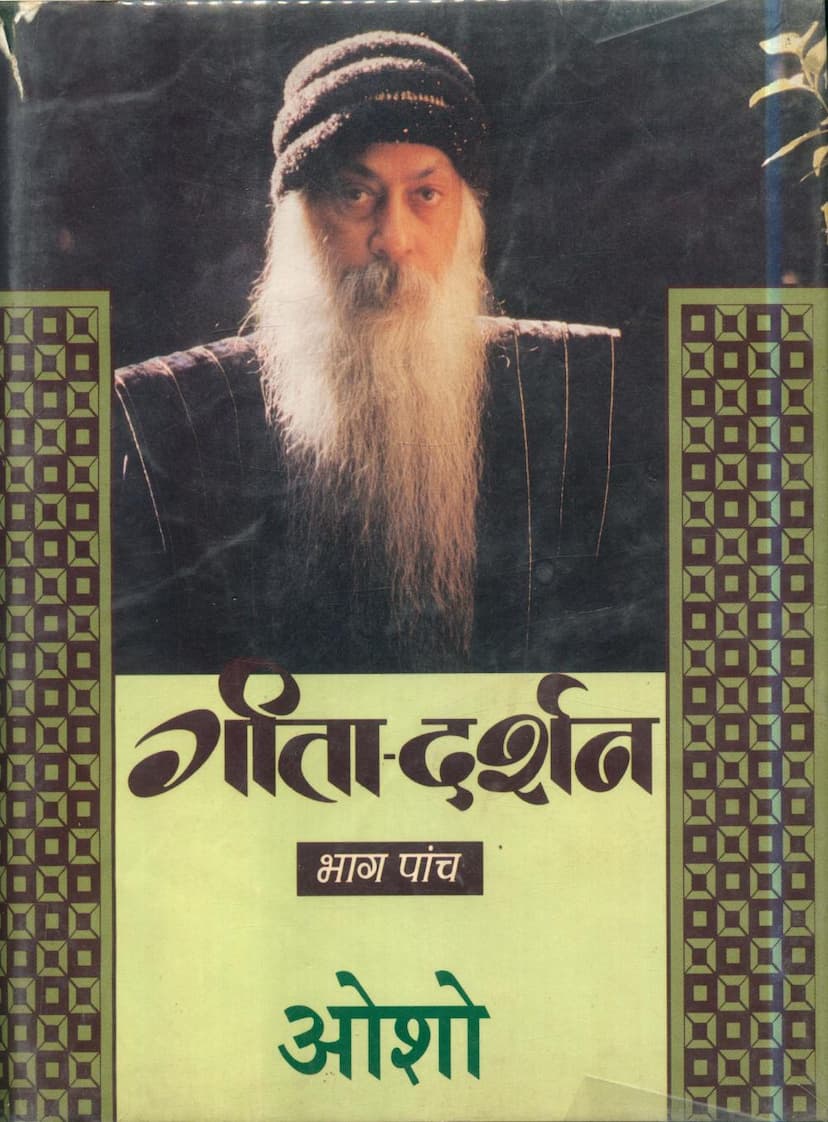Gita Darshan Part 05
Added to library: September 1, 2025

Summary
Here's a summary of the provided Jain text, "Gita Darshan Part 05" by Osho Rajneesh, focusing on Chapters 10 and 11 of the Bhagavad Gita:
This book, "Gita Darshan Part 05," compiles 27 discourses by Osho Rajneesh on Chapters 10 (Vibhuti Yoga) and 11 (Vishwaroop Darshan Yoga) of the Bhagavad Gita. Osho's approach is characterized by making the ancient text accessible and relevant to contemporary seekers.
Core Interpretation of Arjuna and Krishna:
Osho views Arjuna as the essence of the human condition, representing the wavering, uncertain individual present in everyone. Krishna, on the other hand, is seen as the embodiment of divine manifestation, the distilled essence of all that is considered divine in existence. The Gita's dialogue is thus not just between two individuals, but between two existential realities, two worlds, and two parallel dimensions of consciousness.
Chapter 10: Vibhuti Yoga (The Yoga of Divine Manifestations)
This chapter is presented as a continuation of the Ninth Chapter's reassurance to the ordinary person that the path of yoga is difficult. Krishna in the Ninth Chapter offered an assurance that even simple offerings made with devotion are accepted. In Chapter 10, Krishna begins to reveal his own "Vibhuti" – his divine manifestations and glories. Osho explains that creation itself is a manifestation of the divine. By hearing Krishna describe these manifestations, Arjuna's desire to see the divine in its vast, all-encompassing form is awakened, leading to Chapter 11.
Osho emphasizes key themes within Chapter 10, often through metaphors and everyday examples:
- The Ineffable Nature of the Divine: Krishna's "Param Vachan" (Supreme Word) refers to that which is beyond dualities of true and false, the ineffable, the ungraspable. It's not about factual verification but about a transformation of consciousness.
- The Limitations of Intellect: Osho stresses that intellect and logic cannot grasp the divine. True understanding comes through inner transformation and direct experience, not mere intellectualization.
- The Essence of Divinity in All Things: Krishna enumerates his chief manifestations across various categories—the best among trees, seasons, warriors, and so on. Osho highlights that divinity isn't limited to grand displays but is present in the essence of all existence, from the smallest to the most magnificent.
- Faith as a Starting Point: The journey begins with faith, especially when direct experience is absent. Osho draws parallels with the blind man and light, emphasizing that for the unseeing, faith is the initial step towards eventual experience.
- The Role of the Guru: Krishna's discourse is considered "Param Vachan" due to the deep love and connection between him and Arjuna, highlighting the guru-disciple relationship where wisdom is transmitted through intimate dialogue, not just intellectual discourse.
- Transformation through Acceptance: Overcoming anger, lust, and other vices is not through suppression but through understanding and transforming the energy, becoming a witness to these states. This leads to a state of "Nishkamp Chitt" (unwavering consciousness).
Chapter 11: Vishwaroop Darshan Yoga (The Yoga of the Vision of the Cosmic Form)
This chapter details Krishna revealing his terrifying and magnificent universal form to Arjuna. Osho frames this as Arjuna's desire to see the unmanifested (Nirguna) in its manifested (Saguna) Virat (Cosmic) form.
Key themes explored in Chapter 11:
- Preparation for the Vision: Arjuna's readiness to see the Vishwaroop is crucial. Osho emphasizes that this vision is not granted casually. It requires intense devotion, a surrendered heart, and a mind that is no longer seeking external answers but is open to the inner.
- The Divine Eye: To perceive the Virat Swaroop, Arjuna is granted a "Divya Chakshu" (divine eye). This symbolizes the opening of inner vision, a capacity beyond ordinary sight, achieved through surrender and devotion.
- Fear and Awe: The Virat Swaroop is described as both awe-inspiring and terrifying, encompassing all existence, time, and destruction. Osho explains that this overwhelming vision can lead to fear and confusion, highlighting the need for inner stability and surrender to comprehend it.
- The Nature of Reality: The vision reveals that Krishna is the source of all creation, sustenance, and destruction. The universe, in its entirety, is within him. This underscores the ultimate oneness and the interconnectedness of all things.
- The Importance of Direct Experience: Ultimately, Osho stresses that mere intellectual understanding of the Gita's teachings is insufficient. True realization comes through direct experience, which is facilitated by a transformed consciousness, unwavering focus, and profound surrender.
Overall Message:
Osho's "Gita Darshan Part 05" serves as a guide to understanding the profound spiritual insights within the Bhagavad Gita, bridging the gap between ancient wisdom and modern consciousness. He encourages readers to move beyond mere intellectual analysis and to engage with the teachings on a deeper, experiential level, ultimately leading to self-realization and communion with the divine within. The discourses emphasize that the divine is not an external entity but an inner reality, accessible through a transformed state of being.